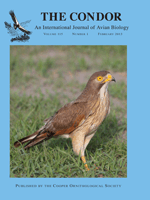Predation is the leading cause of nest failure for many bird species. Most studies associate risk of predation with vegetation characteristics of the nest site. Alternatively, the Skutch hypothesis suggests that adults' activity at the nest can attract the attention of predators and lead to an increased risk of predation. We investigated whether vegetation characteristics surrounding nest sites affected nest attentiveness and visitation and if these behaviors affected nest survival. We used 1-hr nest observations and 8-hr video observations at Black-capped Vireo (Vireo atricapilla) nests in three regions of Texas to quantify nest attentiveness and visitation during incubation and the nestling stage. Females spent 80% more time on nests during incubation and 250% more time on nests during the nestling stage than did males, but visitation was similar for each sex. In general, nest behavior did not appear to be affected by vegetation characteristics, except males' attentiveness during incubation increased as average cover from 0 to 2 m increased. Adults' activity did not appear to increase the risk of nest predation. Despite visitation being more frequent during the nestling stage than during incubation, visitation during either stage did not affect nest survival. Overall, nest survival improved with attentiveness during incubation.
How to translate text using browser tools
1 February 2013
Effects of Adult Behavior and Nest-Site Characteristics on Black-Capped Vireo Nest Survival
Theresa L. Pope,
Tara J. Conkling,
Kathryn N. Smith,
Melanie R. Colon,
Michael L. Morrison,
R. Neal Wilkins
ACCESS THE FULL ARTICLE

The Condor
Vol. 115 • No. 1
February 2013
Vol. 115 • No. 1
February 2013
behavior
Black-capped Vireo
nest survival
nest-site characteristics
Parental care
Skutch hypothesis
Vireo atricapilla




